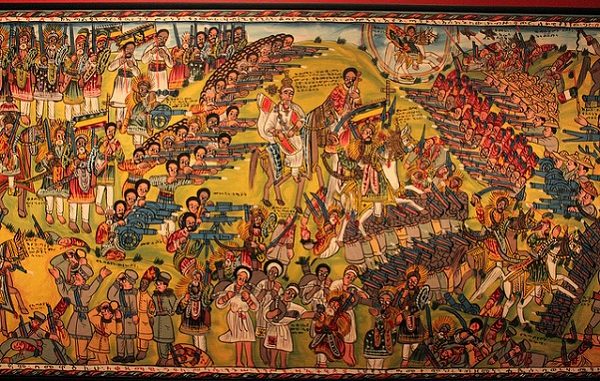
The Battle of Adwa, fought Mar. 1, 1896, was a violent clash between Italian imperial forces and the army of Ethiopia (known then as Abyssinia)
By Hannah Giorgis (Quartz) |
The northern Ethiopian town of Adwa is the place my grandfather called home. It’s a small market town in the Tigray region, home to several churches where Ethiopian Christians of multiple sects congregate. My grandfather spoke of Adwa with pride and reverence, sometimes slipping into Tigrigna (one of the languages spoken in Tigray) as he recalled memories. The name “Adwa” always sounded so regal coming from his mouth, at once both strong and comforting.
For much of Ethiopia and its diaspora, Adwa’s significance is every bit as political as it is personal. In the bloodstained landscape that is Ethiopian history, Adwa is known primarily as the site at which the decisive final battle in the First Italo-Ethiopian War was fought. The Battle of Adwa, fought Mar. 1, 1896, was a violent clash between Italian imperial forces and the army of Ethiopia (known then as Abyssinia), composed of citizens who gathered from throughout the country to defend the nation’s sovereignty. The Abyssinian forces defeated Italy’s troops, ending the first Italo-Ethiopian War and Italy’s chances at formally colonizing what would later come to be called Ethiopia.
Long before the battle itself, both nations began to lay the groundwork for an Italo-Ethiopian conflict. Seven years prior to the events at Adwa, King Menelik II of Ethiopia signed the Treaty of Wichale (sometimes spelled “Wuchale” in transliterated Amharic, or “Ucciale” or “Ucciali” in Italian) with King Umberto I of Italy, essentially ceding the northern territories of Hamasen, Bogos, and Akale-Guzai (modern day Eritrea and northern Tigray).
The controversial 1889 treaty provided Ethiopia’s military with advanced European weaponry (namely, muskets and cannons), as well as financial resources, in exchange for control of the aforementioned territories. The treaty, signed before the formal start of the European colonial project known as the “Scramble for Africa,” was intended to align Ethiopia with Europe, while protecting the nation’s power by sacrificing only a handful of regions under its control.
One frequently contested article of the treaty stated, depending on whether it was read in Italian or Amharic, that Ethiopia’s government either must or simply could report to Italy when dealing with other foreign powers. Each country acted in accord with its respective translation, which naturally favored its own interests.
Read more about “If we want to understand African history, we need to understand the Battle of Adwa” on Quartz
